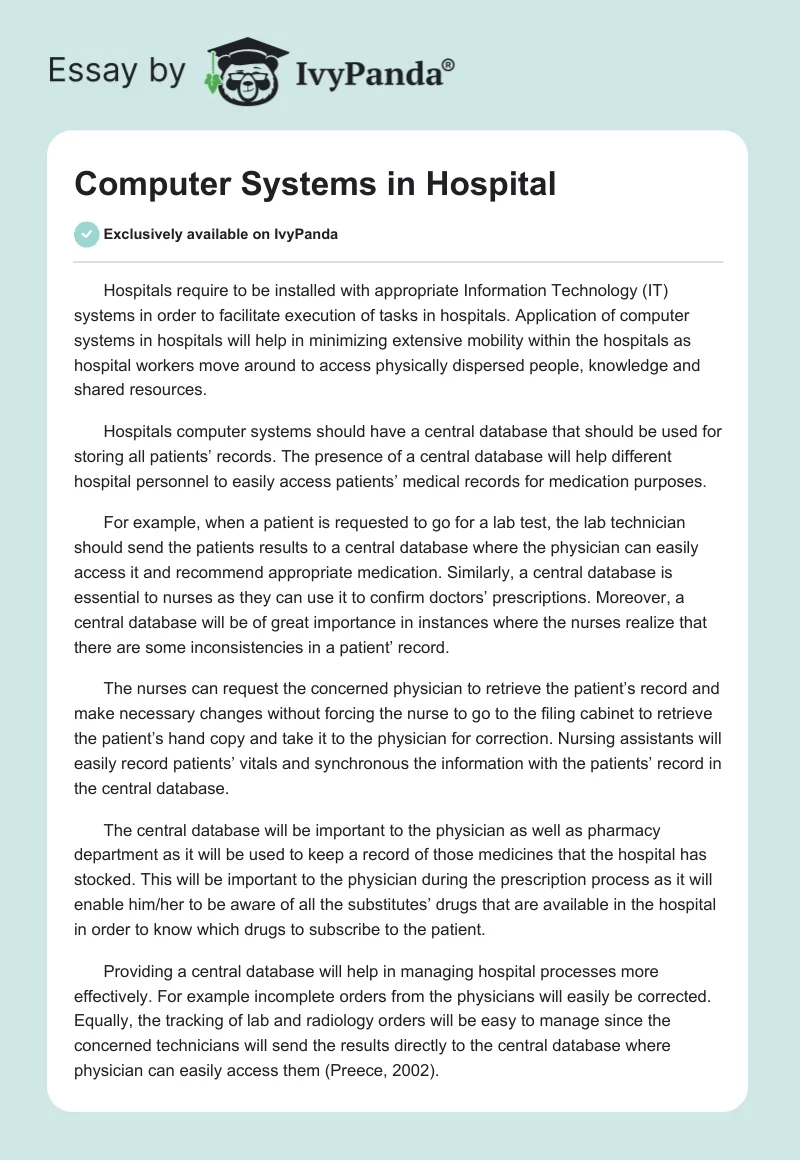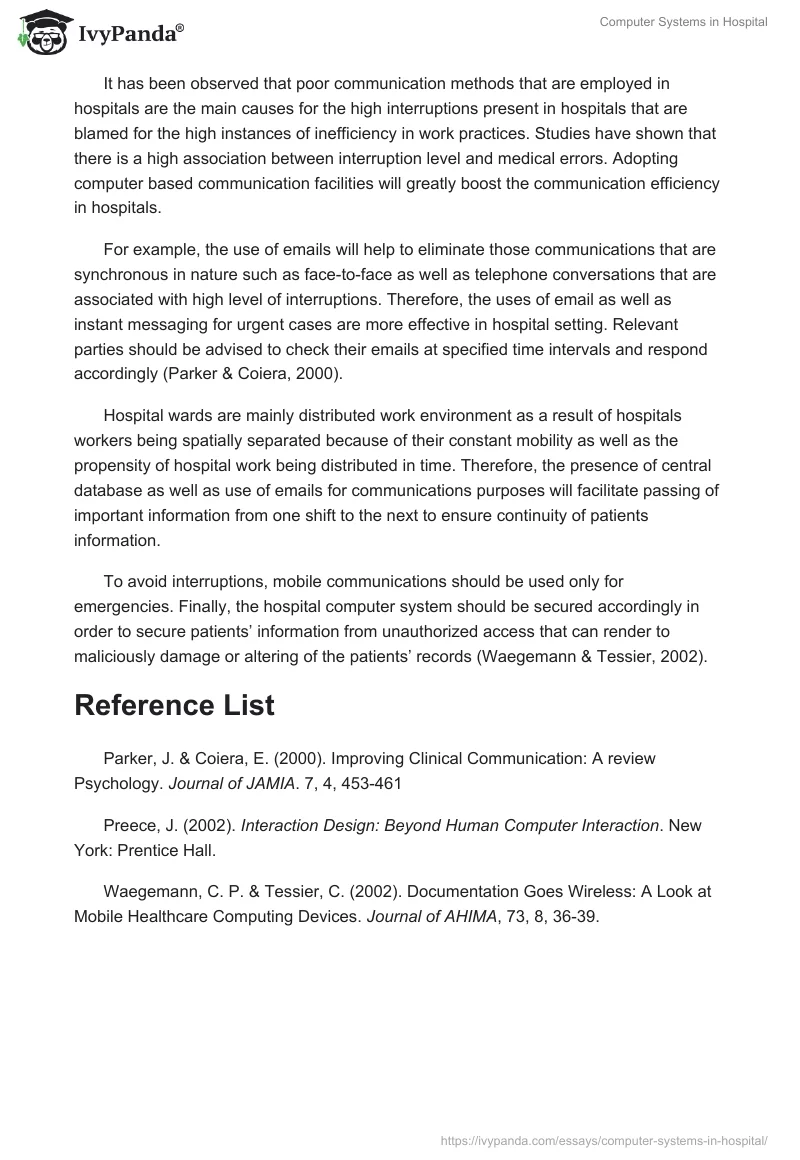Hospitals require to be installed with appropriate Information Technology (IT) systems in order to facilitate execution of tasks in hospitals. Application of computer systems in hospitals will help in minimizing extensive mobility within the hospitals as hospital workers move around to access physically dispersed people, knowledge and shared resources.
Hospitals computer systems should have a central database that should be used for storing all patients’ records. The presence of a central database will help different hospital personnel to easily access patients’ medical records for medication purposes.
For example, when a patient is requested to go for a lab test, the lab technician should send the patients results to a central database where the physician can easily access it and recommend appropriate medication. Similarly, a central database is essential to nurses as they can use it to confirm doctors’ prescriptions. Moreover, a central database will be of great importance in instances where the nurses realize that there are some inconsistencies in a patient’ record.
The nurses can request the concerned physician to retrieve the patient’s record and make necessary changes without forcing the nurse to go to the filing cabinet to retrieve the patient’s hand copy and take it to the physician for correction. Nursing assistants will easily record patients’ vitals and synchronous the information with the patients’ record in the central database.
The central database will be important to the physician as well as pharmacy department as it will be used to keep a record of those medicines that the hospital has stocked. This will be important to the physician during the prescription process as it will enable him/her to be aware of all the substitutes’ drugs that are available in the hospital in order to know which drugs to subscribe to the patient.
Providing a central database will help in managing hospital processes more effectively. For example incomplete orders from the physicians will easily be corrected. Equally, the tracking of lab and radiology orders will be easy to manage since the concerned technicians will send the results directly to the central database where physician can easily access them (Preece, 2002).
It has been observed that poor communication methods that are employed in hospitals are the main causes for the high interruptions present in hospitals that are blamed for the high instances of inefficiency in work practices. Studies have shown that there is a high association between interruption level and medical errors. Adopting computer based communication facilities will greatly boost the communication efficiency in hospitals.
For example, the use of emails will help to eliminate those communications that are synchronous in nature such as face-to-face as well as telephone conversations that are associated with high level of interruptions. Therefore, the uses of email as well as instant messaging for urgent cases are more effective in hospital setting. Relevant parties should be advised to check their emails at specified time intervals and respond accordingly (Parker & Coiera, 2000).
Hospital wards are mainly distributed work environment as a result of hospitals workers being spatially separated because of their constant mobility as well as the propensity of hospital work being distributed in time. Therefore, the presence of central database as well as use of emails for communications purposes will facilitate passing of important information from one shift to the next to ensure continuity of patients information.
To avoid interruptions, mobile communications should be used only for emergencies. Finally, the hospital computer system should be secured accordingly in order to secure patients’ information from unauthorized access that can render to maliciously damage or altering of the patients’ records (Waegemann & Tessier, 2002).
Reference List
Parker, J. & Coiera, E. (2000). Improving Clinical Communication: A review Psychology. Journal of JAMIA. 7, 4, 453-461
Preece, J. (2002). Interaction Design: Beyond Human Computer Interaction. New York: Prentice Hall.
Waegemann, C. P. & Tessier, C. (2002). Documentation Goes Wireless: A Look at Mobile Healthcare Computing Devices. Journal of AHIMA, 73, 8, 36-39.


